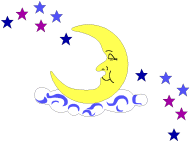

BruceMuseum.com
Greenwich, CT 06830 (203) 869-6786, Ext. 338
Astronomical Society of Greenwich info
 |
The Astronomical Society of Greenwich |  BruceMuseum.com |
| The
Bruce Museum, Museum
Drive Greenwich, CT 06830 (203) 869-6786, Ext. 338 Astronomical Society of Greenwich info |

2 - Moon in conjunction with Venus
5 - New moon causes a partial solar eclipse visible from Antarctica
6 - Moon in conjunction with Mercury
8 - Moon in conjunction with Mars
10 - Moon in conjunction with Jupiter
11 - Moon in conjunction with Saturn
12 - First quarter moon
13 - Moon in conjunction with Aldebaran
16 - Moon is at perigee (226,486 miles from Earth)
19 - Full moon - "Snow Moon"
26 - Last quarter moon
28 - Moon is at apogee (251,416 miles from Earth)
News of the Worlds
Groundhog Day (February 2) marks the midpoint between the
Winter Solstice and the Spring Equinox, meaning that we'll have six
more weeks of winter whether Punxutawney Phil sees his shadow or not.
Mercury is an "evening star" once again, best viewed between the
9th and the 19th. Jupiter and Saturn
continue high and bright though they are getting farther west. Mars
still hovers in the evening twilight. (All three outer planets
disappear behind the Sun in late April.)
As can be seen above, the Moon makes a tour of all four between the 6th and the 11th.
Uranus is in conjunction with the Sun on the 6th. It will join Neptune
and Venus in the morning sky toward the end of March.
Astronomical Digest
The Old Farmers' Almanac, 2000 edition, contains an
entertaining article by Bob Berman (who also writes for Astronomy and
Sky & Telescope) on the subject of the Millennium, pointing
out that the current system has only been in general use for a thousand
years or so. So, if the notion of the millennium makes you nervous, you
can always use another system. (For instance, the Jewish calendar,
which dates back to the Exodus, is in year 5761.) The article also
describes several natural numbering systems such as the Saros Cycle of
54 years and one month, which is used to calculate the recurrence of
lunar and solar eclipses.
A sidebar tells the story of the 5th-century Romanian monk, Dionysius Exiguus (which can be
translated as Dennis the Short) to whom Pope John I gave the job of
revising the old Roman calendar. Doing his research in Alexandria,
Egypt, Dionysius calculated when the birth of Christ had occurred,
calling his new system A.D. (Anno Domini, the year of our Lord).
The system was further refined by the 8th-century English monk,
Venerable Bede, who started the custom of counting backwards the years
before Christ (B.C.). (Bede was the one who forgot to insert a Year
Zero between 1 B.C. and 1 A.D., thus causing the confusion over when
the Millenium really starts.) By the year 1000, the calendar had been
adopted by most of Europe.